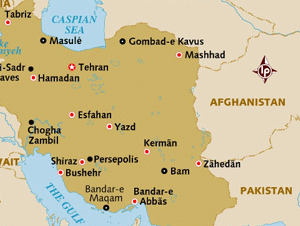VIDEO: Iranian nuclear scientist killed; Doomsday Clock ticks toward midnight
Another Iranian nuclear scientist has been killed in an assassination and Iranian officials are pointing fingers at Israel and perhaps the United States.
Gordon Corera, security correspondent for our partner the BBC, said there’s no doubt there’s a quiet campaign underway in Iran now to try and subvert the country’s efforts to develop nuclear weapons. Signs are slowly coming forward. There’s the Stuxnet worm that targeted centrifuges, of course. And the American drones that have been flying over the country, including one that was captured. But Wednesday morning, it became clear that there’s a direct approach underway as well. Mostafa Ahmadi Roshan was killed when a magnetic bomb was attached to his car by a speeding motorcyclist.
Roshan is the fourth Iranian nuclear scientist to be assassinated in the past two years — typically by assassins using a similar method. He was a chemical expert and a director of the Natanz uranium enrichment facility.
“If you look at that range of activity, you can certainly say there is a covert, clandestine campaign to try and delay and slow down Iran’s nuclear program,” Corera said.
The United States officially denied having any involvement in the assassination.
Whether this organized campaign is having any effect is hard to say, Corera said. He said it would be hard to imagine these sorts of efforts having an political impact — any impact on Iran’s leaders choosing to slow down or halt their nuclear program. On the flip-side, removing these people from the operation, people with special skills, may at least temporarily physical slow down the operation.
“What the effect of it is, it’s quite hard to gauge. I think the hope of whoever is carrying it out is clearly to buy more time,” he said.
Meanwhile, the continuing efforts by countries like Iran to secure nuclear weapons and the global community’s failure to take any concrete steps to slow or stop climate change had led the Bulletin of the Atomic Scientists to move the Doomsday Clock one minute closer to midnight.
The clock, which now stands at 11:55 p.m., has historically indicated how likely it is that humanity is about to do something that could end human life on earth. It was 17 minutes to midnight after the U.S. and the Soviet Union signed the START missile reduction treaty in 1991. It was set closest to midnight in 1953, when the United States and Soviet Union tested thermonuclear bombs within nine months of each other.
